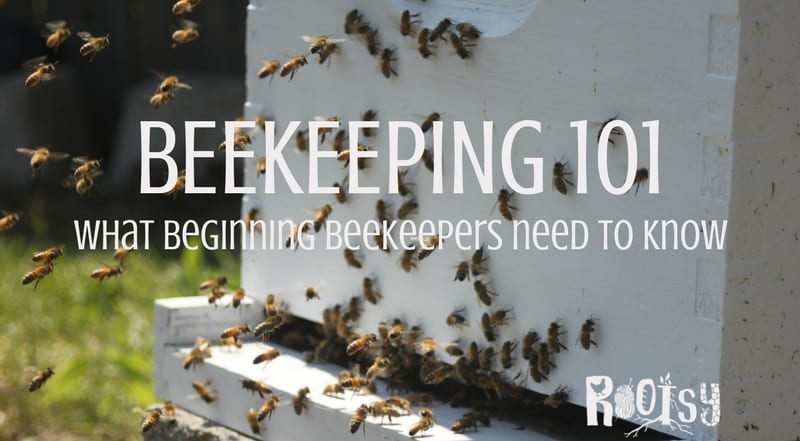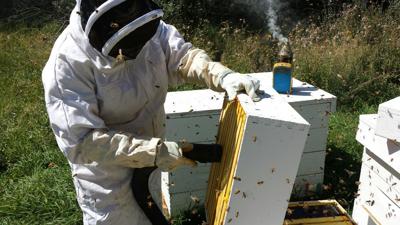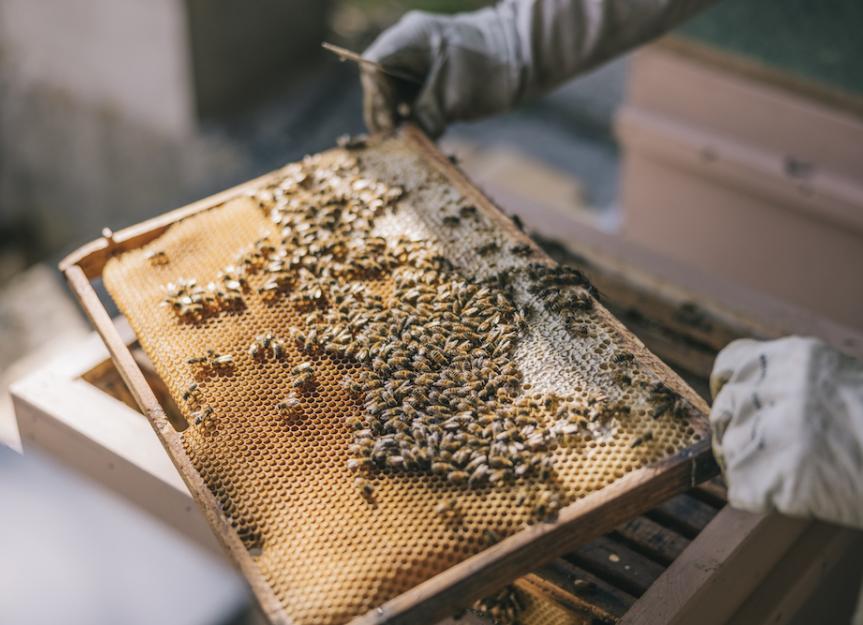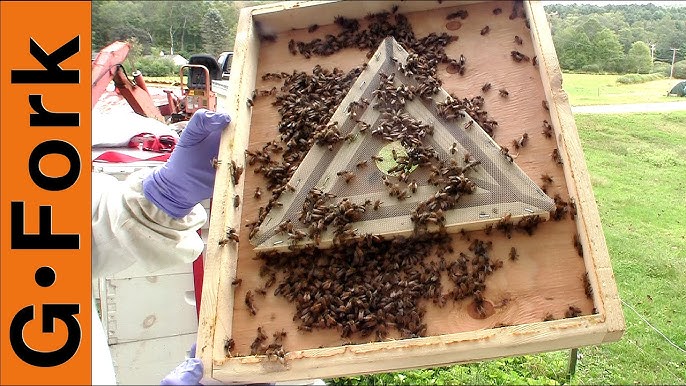
Imagine yourself in the peaceful countryside, surrounded by the sounds of buzzing bees and the sweet scent of honey. In this article, you will discover the secrets of harvesting honey like an expert beekeeper. Whether you are a beginner or someone looking to enhance your beekeeping skills, this guide will provide you with the knowledge and techniques needed to gather honey from your beehives with confidence and finesse. So grab your beekeeping suit and prepare to become a pro at harvesting honey!

This image is property of rootsy.org.
Choosing the Right Equipment
Beekeeping requires the right equipment to ensure your safety and the well-being of the bees. One of the most essential pieces of equipment is the bee suit and protective gear. These are designed to protect your body from bee stings and provide a barrier between you and the bees. Make sure to choose a suit that fits well and covers your entire body, including a veil to protect your face.
In addition to the bee suit, hive tools are necessary for inspecting and manipulating the hive. These tools, such as a hive tool or a bee brush, allow you to pry open the hive, lift frames, and scrape off excess propolis or wax. They are invaluable for maintaining your hive and ensuring its health.
Another essential piece of equipment is the smoker. The smoker calms the bees by producing smoke, which triggers them to think the hive is in danger of fire. The smoke prompts the bees to consume honey, making them more docile. This allows you to work on the hive without the bees becoming agitated.
Hive boxes are where your bees will live and build their honeycomb. It is crucial to choose the right size and material for your hive boxes. Standard hive sizes are deep, medium, or shallow, and selecting the appropriate size depends on your beekeeping goals and the specific needs of your bees.
Frames and foundation are integral components of the hive that provide the structure for the honeycomb. The foundation consists of a thin sheet of beeswax or plastic that guides the bees in building their honeycomb. Frames hold the foundation and help keep the honeycomb secure. Ensure that you have enough frames and foundation for your hive, as this allows the bees to efficiently build their honeycomb and store honey.
Understanding Bee Behavior
To become a successful beekeeper, it is essential to understand the behavior of bees. Bees have a complex social structure within their colonies and go through distinct life cycles.
The life cycle of bees consists of three castes: worker bees, drones, and the queen. Worker bees are the smallest bees in the hive and perform various tasks, such as foraging for nectar, pollen collection, and caring for the young. Drones are male bees whose primary purpose is to mate with a queen. The queen is the largest bee in the hive and is responsible for laying eggs and maintaining the colony’s population.
Communication and organization within a bee colony are fascinating. bees communicate through various methods, including dancing and pheromones. They use dancing to share information about the location of food sources, while pheromones play a vital role in maintaining colony cohesion and reproduction.
Recognizing signs of aggression in bees is crucial for your safety. Aggressive behavior can include increased buzzing and darting movements. If you notice aggression in your bees, it may be a sign of a disturbance within the hive, such as intruders or a lack of food. Understanding and addressing these signs early can help maintain a harmonious hive environment.
One essential tool for beekeeping is the smoker. Smoke has a calming effect on bees as they interpret it as a sign of danger. The smoke prompts the bees to consume honey, which reduces their aggression. Always have a smoker on hand and use it judiciously to keep the bees calm during hive inspections and harvests.
Preparing for Harvest
Before embarking on the honey harvest, it is crucial to prepare appropriately. Choosing the right time to harvest is essential for maximizing honey production. Bees work diligently during peak nectar flows, so it’s best to harvest when the honey supers (the upper boxes where the honey is stored) are full.
Inspecting the hive before harvesting is crucial to ensure the health and readiness of the bees. Look for signs of disease or pest infestations, and address any issues before proceeding with the harvest. It is also a good opportunity to assess the overall strength of the hive and its resources.
Removing unused frames is necessary to clear space for honey extraction. Bees tend to leave some frames untouched, which may contain old and uncapped honey. By removing these frames, you will have them available for extraction.
Clearing bees from the frames is an important step before extracting honey. There are various techniques to achieve this, such as using a bee brush or a leaf blower. Gently brushing or blowing the bees off the frames helps minimize stress and reduces the chance of bee fatalities during the harvest.
Feeding bees before the harvest is crucial, especially if there is a drought or low nectar flow in your area. Providing supplementary food, such as sugar syrup or pollen patties, ensures that the bees have enough energy and resources to produce more honey.
Harvesting Techniques
harvesting honey requires a systematic approach to ensure a successful and efficient process. Once you have prepared the hive, it’s time to remove the bees from the supers and extract the honey.
Removing the bees from the supers can be done using a bee escape board or a fume board. These devices allow the bees to exit the supers but prevent them from reentering, making it easier to remove the frames without harming the bees. After a period of time, typically 24-48 hours, most of the bees will have left the supers.
Brushing bees off the frames is another technique to clear the bees before extraction. Using a soft-bristled bee brush, gently brush the bees off the frames, keeping their well-being in mind. This method requires a careful touch to ensure minimal stress to the bees.
Uncapping the honeycomb is the next step in the harvest process. Honeycomb cells are covered with a layer of wax, which needs to be removed to release the honey. Uncapping can be done using a hot knife, an uncapping fork, or an electric uncapping tool. Ensure that the honeycomb cells are fully uncapped to allow honey extraction.
Extracting honey can be done using various methods and equipment. The most common method is using a honey extractor, which uses centrifugal force to spin the frames and release the honey. Another method is crush and strain, where the honeycomb is crushed, and the honey is strained through a mesh to remove impurities. Choose a method that suits your beekeeping goals and the equipment you have available.
After extracting the honey, it needs to be bottled and stored properly. Clean and sterilize your jars or containers before filling them with honey. Use clean and dry utensils to avoid contamination. Store the honey in a cool, dark place to maintain its quality and prevent crystallization.

This image is property of bloximages.chicago2.vip.townnews.com.
Maintaining Hive Health
The health of your hive is vital for successful beekeeping. Proper hive management includes managing pests and diseases, preventing swarming, providing adequate ventilation, and regularly inspecting and cleaning the hive.
Managing pests and diseases is crucial to maintain a healthy hive. Common pests include Varroa mites and hive beetles, which can weaken the colony if left unchecked. Regular monitoring and appropriate treatments are essential to control pest populations and prevent their spread.
Preventing swarming is necessary to maintain the population of your hive. Swarming is a natural process where the queen and a portion of the bees leave the hive to establish a new colony. To prevent swarming, ensure that the bees have enough space to accommodate their growing population by adding additional hive boxes as needed.
Providing adequate ventilation is crucial for the overall health and comfort of the bees. Bees generate heat within the hive, and proper ventilation helps regulate the temperature and humidity levels. Ensure that your hive has adequate ventilation options, such as screened bottom boards or ventilation holes.
Regularly inspecting and cleaning the hive allows you to identify and address any issues promptly. Inspect for signs of disease, pest infestations, or any structural problems. Cleaning the hive involves removing debris, propolis, and old frames to maintain a clean and hygienic environment for your bees.
Feeding bees during a drought or low nectar flow is crucial for their survival. When natural food sources are scarce, you can provide supplementary food in the form of sugar syrup or pollen patties. This helps ensure that the bees have the required nutrients to thrive.
Safety Precautions
Beekeeping involves working with live insects that can sting if they feel threatened. Taking safety precautions is essential to prevent accidents and minimize the risk of bee stings.
Wearing protective gear is the first line of defense against bee stings. A proper bee suit, including gloves and a veil, provides a barrier between you and the bees. Ensure that your protective gear fits well and covers your entire body to prevent any exposed areas.
Working with a partner can enhance safety during beekeeping activities. Having an extra set of eyes and hands provides additional support and may help in managing challenging situations. Work together to maintain a calm and organized environment.
Avoiding sudden movements is crucial when working with bees. Quick and jerky movements can startle the bees and increase the likelihood of stings. Move slowly and deliberately to minimize disturbance.
Knowing first aid for bee stings is essential, as occasional stings are inevitable. Familiarize yourself with proper first aid techniques, such as removing the stinger, applying cold compresses, and using antihistamine creams or medications if necessary. Always have a first aid kit readily available during beekeeping activities.
Preventing allergic reactions is crucial, especially if you have known allergies to bee stings. Consult with a medical professional to determine if you are at risk of an allergic reaction. Consider carrying an epinephrine auto-injector (EpiPen) in case of severe allergic reactions.

This image is property of image.petmd.com.
Honey Harvesting Tips
Harvesting honey from different types of bees may require different approaches. While the fundamental principles remain the same, the timing and techniques may vary depending on the bee species. Research the specific requirements of the bee species you are keeping to ensure the best honey harvest.
Ensuring proper honey ripeness is vital for high-quality honey. Honey should be capped by the bees before harvesting. Capped cells indicate that the honey has a low moisture content and is ready for extraction. Uncapped honey may contain excess water, affecting its taste, texture, and shelf life.
Understanding honey extraction methods helps you choose the appropriate technique for your beekeeping setup. The two main methods are centrifugal extraction and crush and strain. Each method has its advantages and considerations, so choose the one that aligns with your beekeeping goals.
Utilizing honey extraction equipment can enhance the efficiency of your harvest. Honey extractors come in various sizes and configurations, from manual to electric, and can accommodate different frame sizes. Invest in a reliable honey extractor that suits your beekeeping needs for a smoother extraction process.
Filtering and straining honey is crucial to remove impurities and ensure a smooth consistency. After extraction, pass the honey through a fine-mesh filter or use cheesecloth to remove any wax or bee debris. This step improves the aesthetic appeal and quality of your harvested honey.
Using Honey Byproducts
Aside from enjoying delicious honey, there are multiple ways to utilize the byproducts of beekeeping. Beeswax is a valuable substance that can be rendered and used for various purposes.
Rendering beeswax involves melting the wax to remove impurities and create clean beeswax blocks. These blocks can be used for making candles, lip balms, lotions, and many other beeswax-based products. Beeswax candles are especially popular, as they provide a natural, long-lasting, and sweet-smelling alternative to conventional candles.
Creating honey-infused skincare products is another way to benefit from beekeeping byproducts. Honey has natural moisturizing and antibacterial properties, making it an excellent ingredient for skincare. You can make your own honey-based masks, soaps, or lip balms to enjoy the nourishing benefits of honey.
Cooking and baking with honey adds a unique flavor and natural sweetness to your dishes. Honey can be used as a replacement for sugar in many recipes and provides added moisture to baked goods. Experiment with incorporating honey into your favorite recipes to add a touch of sweetness.
Exploring the medicinal uses of honey has been practiced for centuries. Honey has antibacterial and anti-inflammatory properties, making it a popular natural remedy for various ailments. It can be used to soothe sore throats, treat coughs, and promote wound healing. However, always consult with a healthcare professional before using honey for medicinal purposes.

This image is property of i.ytimg.com.
Common Mistakes to Avoid
Beekeeping is a learning process, and there are common mistakes that beginners should avoid. Harvesting honey too early is one of the most common errors. Be patient and wait for the bees to fully cap the honeycomb before extracting honey. Harvesting prematurely may result in honey with high moisture content, affecting its quality and shelf life.
Agitating the bees unnecessarily can lead to more aggressive behavior. Avoid excessive vibration or shaking of the hive, as it can cause the bees to become defensive. Handle the frames gently and minimize disturbances to keep the bees calm and avoid unnecessary stings.
Poor hive management can have detrimental effects on the health and productivity of your bees. Neglecting regular inspections, failing to address pests or diseases promptly, or inadequate hive maintenance can result in weakened hives and reduced honey production. Stay vigilant and take proactive measures to ensure the overall well-being of your bees.
Inadequate honey extraction techniques can result in lost honey and damage to the honeycomb. Improper use of extraction equipment or incomplete uncapping can lead to honey loss. Take the time to learn the proper techniques and use the appropriate equipment to maximize your honey yield.
Not providing enough food for bees can be detrimental to their survival, especially during droughts or periods of low nectar flow. Bees require a consistent and adequate food supply to produce honey and sustain their population. Monitor food availability and provide supplementary feeding if necessary to prevent starvation.
Joining Beekeeping Communities
Joining beekeeping communities can greatly enhance your knowledge, skills, and overall beekeeping experience. By connecting with other beekeepers, you can gain access to valuable resources and support.
Finding local beekeeping associations is a great way to connect with fellow beekeepers in your area. These associations often offer educational programs, workshops, and mentoring opportunities. They also provide a platform for sharing experiences and exchanging valuable information.
Attending workshops and classes allows you to further develop your beekeeping skills. These educational sessions cover various topics, from beginner beekeeping to advanced techniques. Take advantage of these opportunities to learn from experienced beekeepers and expand your knowledge base.
Networking with experienced beekeepers is invaluable for gaining insights and advice. Engage in conversations and build relationships with beekeepers who have years of experience. Their wisdom and guidance can prove invaluable as you navigate the challenges and rewards of beekeeping.
Participating in beekeeping conferences provides a broader perspective on current trends and developments in the beekeeping industry. These events often feature expert speakers, demonstrations, and vendor exhibits. Attend conferences to stay updated on the latest beekeeping practices and innovations.
Sharing knowledge and experiences is a vital part of being a beekeeper. Engage with online forums, social media groups, and beekeeping magazines to share your experiences, ask questions, and learn from others. By actively participating in the beekeeping community, you contribute to the collective knowledge and foster a supportive environment for all beekeepers.
In conclusion, beekeeping is a fulfilling and rewarding hobby that requires knowledge, dedication, and the right equipment. By choosing the right equipment, understanding bee behavior, preparing for harvest, mastering harvesting techniques, maintaining hive health, practicing safety precautions, utilizing honey byproducts, avoiding common mistakes, and joining beekeeping communities, you can become a successful and skilled beekeeper. Embrace the journey, enjoy the sweetness of harvested honey, and contribute to the preservation of these incredible pollinators.

This image is property of i.ytimg.com.